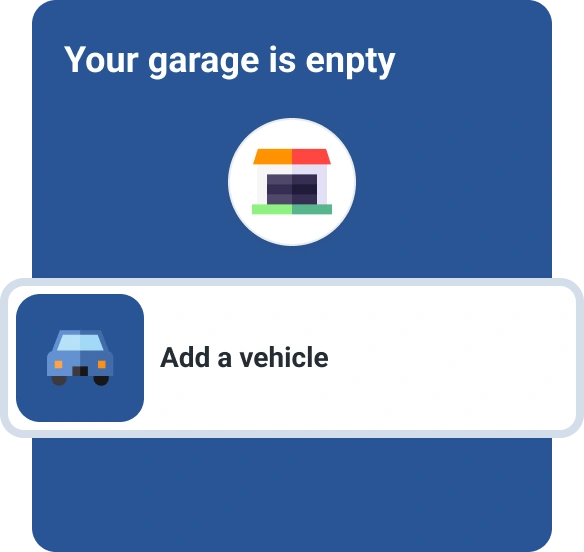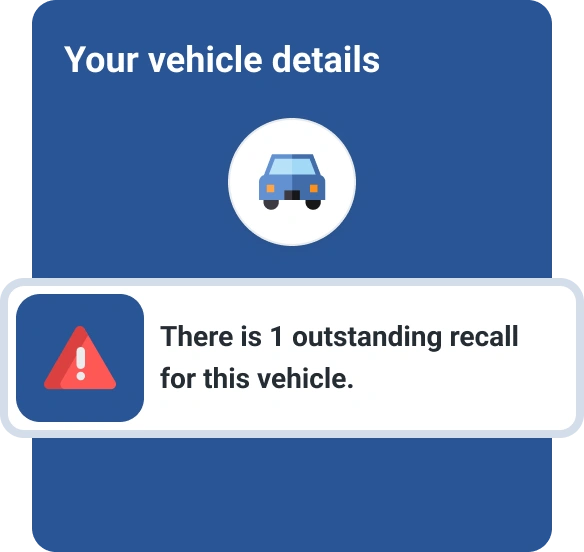What Is the Best Way to Pay for a Car?
Quick Answer
The best way to pay for a car depends on your unique situation. The most common ways to pay for a car are to use an auto loan, pay with cash or lease the vehicle.

While the thought of hitting the road with a new car can be exciting, many of us approach the car-buying process with dread. On top of finding a car that meets all your criteria and possibly having to haggle with a dealer or seller, you have to figure out how you'll pay for it.
Many car buyers rely on financing, but don't assume you have to—there are plenty of other tactics. The best way to pay for a car ultimately depends on your situation and goals. Here are some to consider and what you need to know about each one.
Ways to Pay for a Car
There are several different payment methods you can use to buy a car. Here's what you need to know about each one and the pros and cons to consider.
Paying With Cash
If you have sufficient savings, you can simply buy a car outright instead of relying on some form of financing. While it might be unrealistic to save enough cash to buy a brand new car outright, it's a wise strategy to pay with cash if you're able to buy an inexpensive used car.
Benefits:
- Interest savings: By paying with cash savings instead of taking out a loan, you save money by not paying interest.
- Avoid overspending: When you buy with cash, you're limited to spending what you can actually afford. With a loan or lease payment, on the other hand, it can be easier to buy a car that's outside of your price range.
- Free-and-clear ownership: With no financing arrangement, you'll receive the title as soon as the paperwork is completed.
Downsides:
- It can take time to save up: If you want to buy a car with cash, you may need to start planning several months or even years in advance.
- Limited options: If you're limited to your savings balance, you may be stuck with less expensive used models. While that's not inherently a bad thing, cheap used cars may be more likely to need costly repairs in the near term.
- Can impact other savings goals: If you deplete your savings to buy a car, it could leave you exposed in the event of a financial emergency. What's more, focusing on saving up for a car could make it more difficult to contribute to other important savings objectives, such as a down payment on a home or retirement planning.
How to pay cash for a car: You typically can't pay a dealer with straight cash. Instead, you'll need to obtain a cashier's check from your bank or credit union to seal the deal.
As you complete the negotiation process, make it clear that you plan to pay in cash and ask for the exact amount you'll need to pay. Remember that you'll also be on the hook for various taxes and fees, so you'll need to include those in your budget.
Once you have an amount, head to your bank or credit union to get a cashier's check made out to the dealer.
Learn more: How to Pay Cash for a Car
Using an Auto Loan
An auto loan is a type of loan that you can use to finance the purchase of a vehicle. According to Experian's State of the Automotive Finance Market report, auto loans were used to finance roughly 55% of new vehicles and nearly 36% of used vehicles in the second quarter of 2024. You can borrow money directly from a lender, or you can opt for dealer-arranged financing.
Benefits:
- Low upfront costs: While you may need to make a down payment, you can roll all of your other costs into the loan, making it easier to get into a vehicle with minimal upfront expenses.
- Wider selection: With an auto loan, you can spend beyond what you have saved up, giving you more options, especially with newer vehicles.
- Can build your credit: With on-time payments, you can use an auto loan to build and maintain a positive credit history. Additionally, if you only have credit cards to your name, an auto loan can add to your credit mix, which makes up 10% of your FICO® ScoreΘ.
Downsides:
- Interest costs: Even if you qualify for a low interest rate, you may still end up paying thousands of dollars in interest charges over the life of your loan.
- Potential for negative equity: If you don't make a large down payment, the car's value could depreciate faster than you can pay down the loan balance. If you end up owing more than the car is worth, that negative equity could cause trouble if you total your car or you want to buy another vehicle.
- Monthly payments: The average monthly payment for a new car loan was $734, according to Experian data from Q2 of 2024, and used car payments weren't much cheaper with a $525 average payment. Adding another debt payment to your budget can make it difficult to keep up with other obligations and achieve your financial goals.
How to finance a car: To get an auto loan, start by determining your budget and check your credit score and credit report. Then, consider getting preapproved with a few auto lenders, so you can compare offers.
Once you're ready to go to the dealership, you can also consider letting the dealer shop your credit application to more lenders to make sure you get the best deal. As you finalize the purchase, you or the dealer will contact your chosen lender to complete the financing process.
Leasing
Leasing may be worth considering if you're planning to get a new vehicle but you don't plan on keeping it for a long time. Leases typically last between two and four years, during which you're essentially paying for the vehicle's depreciation. According to Experian data, roughly a quarter of new cars are leased instead of financed with a loan or bought outright.
Benefits:
- Lower monthly payments: Because you're not financing the full value of the car, lease payments tend to be lower than loan payments. For example, while the average new car loan payment is $734, the average payment for a lease is $586.
- Frequent vehicle upgrades: If you prefer driving newer vehicles, leasing makes it easier to switch cars every few years.
- Fewer repair costs: Because leases tend to only be available on new cars, you likely won't need to deal with any major repairs. What's more, the car will typically be under warranty for the duration of your lease, so even if a repair is required, it may be covered.
Downsides:
- No ownership: While lease payments are lower than loan payments, you're generally not building up any equity in the vehicle or working toward ownership.
- Usage limitations: Lease agreements also typically have limitations on how you can use the vehicle, including annual mileage restrictions.
- Wear-and-tear costs: If the vehicle has more wear and tear than normal, you may have to pay a fee at the end of your lease.
How to lease a car: To lease a car, simply visit one of your local dealerships and ask about your options. It may also be wise to compare leasing options from multiple dealers to ensure you're getting the best deal.
Learn more: Is Leasing a Car a Good Idea?
Credit Cards
Dealerships often have limits on how much can be put on plastic. However, you may be able to use a card to cover some or all of your down payment. You may even be able to pay the entire purchase amount with a card, depending on dealership policies and your credit limit.
If you plan to put some or all of the car on your credit card, you may need to contact your card issuer first to make sure the large transaction will be approved.
Benefits:
- Rewards: If you have a rewards credit card, you may be able to earn cash back, points or miles on your purchase.
- Potential for low-cost financing: If you have a credit card with an introductory 0% annual percentage rate (APR) promotion, you can pay down some or all of the debt within the promotional period with no interest charges.
- No collateral: Unlike an auto loan, a credit card won't require you to use the vehicle as collateral, so you'll own the car outright. There's also no risk of repossession if you can't make your payments.
Downsides:
- High ongoing APRs: Even if you have a 0% intro APR promotion, you may be hard-pressed to pay off the full balance within the promotional period. According to the Federal Reserve from August 2024, credit cards charged an average interest rate of 23.37%, which is much higher than most auto loans.
- Could damage your credit: Putting a large balance on your credit card could cause your credit utilization rate to spike, potentially hurting your credit score until you pay it down.
- No fixed repayment term: Credit cards don't have fixed repayment terms like loans. If you don't stick to your repayment plan, it could take you much longer to pay off your debt.
How to buy a car with a credit card: Before visiting the dealership, contact the dealer to ask about its credit card policies, particularly how much you can put on a card and whether there's a fee involved.
When you're finalizing the deal, provide your credit card to complete your transaction.
Personal Loans
Just like auto loans, personal loans are installment loans that are repaid monthly with interest. However, most personal loans are unsecured and don't require collateral. Repayment terms typically range from one to seven years, depending on the lender.
Benefits:
- No risk of repossession: Because personal loans are unsecured, you don't have to worry about repossession if you can't make your payment—though your credit score may take a hit.
- Flexible repayment terms: Like many auto loans, personal loans may give you between one and seven years to pay down your balance. This can help you find a monthly payment that fits your budget.
- No down payment requirement: Once you have your personal loan funds, you can essentially buy the car as if you were buying it with cash. As a result, you don't have to save up for a down payment.
Downsides:
- Higher interest rates: As an unsecured debt, personal loans typically charge higher interest rates compared to auto loans. According to the Federal Reserve, the average rate for a two-year personal loan was 12.33% in August 2024.
- Potentially higher monthly payment: While some lenders offer terms of up to seven years, others may max out at five years. With higher interest rates on top of that, you may end up with a higher monthly payment compared to an auto loan.
- Fees: Many personal loans charge an upfront origination fee, which can range anywhere from 1% to 12% of the loan amount. If you have great credit, make sure you only compare lenders that don't charge one.
How to buy a car with a personal loan: Take your time to shop around and compare personal loan options. After you pick the best offer, you can apply through the lender's website. Upon approval, you'll typically receive the funds within a few days.
What's the Best Way to Pay for a Car?
There's no best option for everyone, so it's important that you understand your situation and needs as you determine the right one for you. Here are some factors to consider:
- Your credit score: You'll have an easier time qualifying for affordable financing if you have good or excellent credit. However, some options, such as leases and 0% intro APR credit cards, may not be available to you at all if your credit score is fair or poor. If you can't qualify for favorable terms, saving up and paying in cash could be a great choice.
- Costs: As you research your options, carefully compare interest rates and other fees to get a full picture of what your costs will be.
- Savings: If you don't have a lot saved up, you'll likely be better off financing your car purchase. However, if you have sufficient savings to buy a car and meet your other financial needs and goals, you could minimize your costs by paying with cash.
- General preferences: As you compare an auto loan and a lease, think about the pros and cons of each option and choose the one that better suits your preferences.
What to Look for in an Auto Loan
When shopping around for an auto loan, here are some of the features to pay attention to:
- Annual percentage rate: A loan's APR includes all the costs of borrowing, including interest and fees.
- Repayment term: If one offer gives you a much lower payment, it could be due to a longer repayment term. Make sure you're looking at loans with the same term for a true apples-to-apples comparison.
- Monthly payment: An auto loan's monthly payment is a product of the loan amount, interest rate and term.
- Down payment: If you have limited funds available for a down payment, choose a lender that works with the amount you can afford to put down.
Learn more: How to Get the Best Car Loan
How Much of a Down Payment Should You Make on a Car?
It's generally recommended to put down 20% or more on a new car loan and 10% on a used car loan. However, the amount you decide to put down will depend on the lender's requirements and the amount of cash you have available.
Keep in mind, though, that the less you put down, the more likely you are to end up with negative equity. Carefully assess your financial situation to determine the right approach for you.
Learn more: Can I Buy a Car With No Money Down?
Get Your Credit Ready Before Financing
If your credit isn't in great shape right now and you need a loan to purchase a car, it's best to work on improving your credit before you buy. This may not be possible if you're in a time crunch. However, if you can wait several months, it would be prudent to use that time to increase your credit score first.
To do this, keep your credit card balances low, pay down as much debt as possible and pay every bill on time. It's also smart to monitor your credit so you can make sure your hard work is paying off.
What makes a good credit score?
Learn what it takes to achieve a good credit score. Review your FICO® Score for free and see what’s helping and hurting your score.
Get your FICO® ScoreNo credit card required
About the author
Ben Luthi has worked in financial planning, banking and auto finance, and writes about all aspects of money. His work has appeared in Time, Success, USA Today, Credit Karma, NerdWallet, Wirecutter and more.
Read more from Ben

